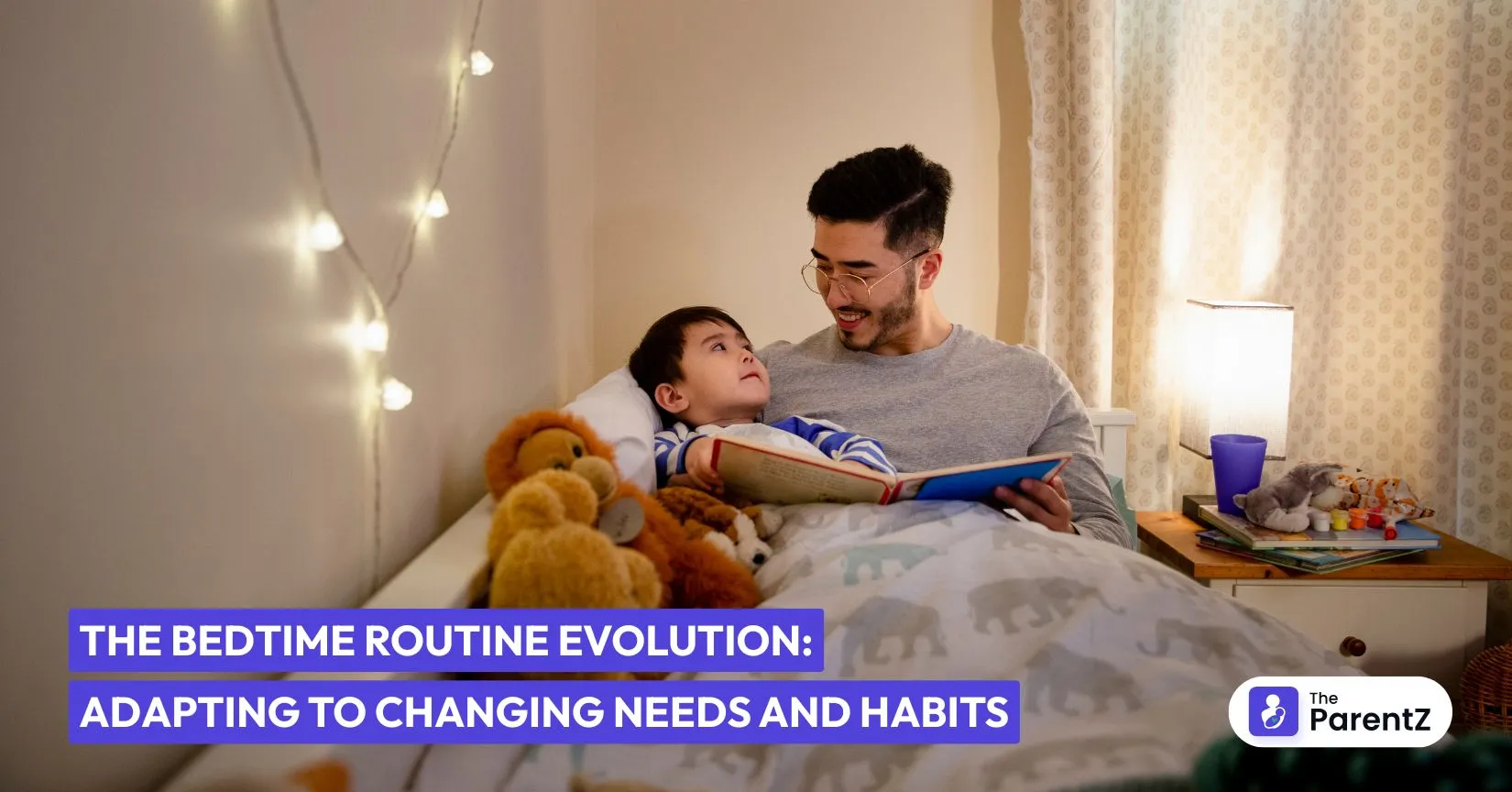Sleep is precious. Ask any parent who's been up for hours trying to get a cranky toddler to bed or negotiating with a school-aged child who's suddenly discovered "just one more" can be said infinitely. Bedtime routines are essential, but here's the thing many parenting books don't emphasize enough: these routines need to evolve as your child grows.
The Newborn Days: Survival Mode
When you first bring your baby home, there's no such thing as a routine. Newborns sleep when they want, wake when they want, and generally run the show. During these early weeks:
- Focus on responding to cues rather than watching the clock
- Keep nighttime interactions minimal—dim lights, quiet voices, quick diaper changes
- Don't worry about "bad habits"—you cannot spoil a newborn
Many parents worry about creating dependencies, but remember: your touch, voice, and presence are biologically normal sleep associations for babies. This phase is temporary, even when it feels endless at 3 AM.
The 4-12 Month Shift: Creating Consistency
Around 4-6 months, babies develop more predictable sleep patterns. This is when you can start introducing a simple wind-down routine:
- A warm bath
- Gentle massage with lotion
- Changing into sleep clothes
- Feeding in a dimly lit room
- A short lullaby or story
The routine signals to your baby that sleep is coming. Many babies at this age still wake during the night—that's completely normal. The routine is about creating predictability, not necessarily sleeping through the night.
Toddler Years: The Bedtime Dance
Toddlers are fascinating creatures who discover something magical: they have opinions and can say "no." Your once-compliant baby may suddenly fight bedtime with impressive determination. This stage calls for:
- A predictable sequence that takes about 30-45 minutes
- Clear boundaries ("We read two books, then it's lights out")
- Limited options that still give them control ("Would you like the blue or the red pajamas?")
- Consistency balanced with flexibility
Many toddlers develop specific bedtime quirks—the stuffed animal that must be positioned just so, or the cup of water that needs to be placed on the nightstand even though they never drink from it. These rituals provide security and control.
Preschool Age: The Dawning of Independence
Between the ages of 3 and 5, children can take more ownership of their bedtime routine:
- Create a visual chart showing the bedtime steps
- Let them mark off completed tasks
- Include self-care skills like brushing teeth and washing face
- Allow 10-15 minutes of quiet play or looking at books in bed
This is also when bedtime stalling reaches peak creativity. "I need to tell you something important" becomes the prelude to vital information like "my sock feels funny" or "I think I saw a cloud shaped like a dinosaur yesterday."
Early School Years: Shifting Schedules
Once school starts, bedtimes often need adjusting to accommodate earlier wake-ups and more demanding days:
- Move bedtime routine to accommodate proper sleep needs (most 5-8 year olds need 10-11 hours)
- Include time for chatting about the day's events or worries
- Consider a journal for kids who process their thoughts at bedtime
- Build in time for reading—either together or independently
Children this age may start having trouble falling asleep as they process school social dynamics or worry about performance. Building in decompression time becomes crucial.
Tweens and Teens: Collaborative Approaches
As children approach adolescence, their circadian rhythms actually shift, making them naturally more alert in the evening. Fighting this biological change rarely works. Instead:
- Gradually shift responsibility for bedtime to them
- Discuss the need of sleep for athletic performance, academic success, and mood
- Help them create evening habits that support quality sleep
- Keep devices out of the bedroom (the hardest battle for many families)
Rigid bedtimes often backfire with teens. Teaching them to recognize sleep cues and honor their body's need for rest serves them better in the long run.
When Change Is Needed
How do you know when it's time to modify your child's routine? Watch for these signs:
- Increased resistance that lasts more than a week
- Changes in sleep quality or duration
- Major life transitions (new sibling, starting school, moving)
- Growth spurts or developmental leaps
- Your current routine is causing stress for everyone involved
Remember that sleep needs change throughout childhood. What worked at 2 won't work at 4, and what works at 8 will seem laughable at 13.
Finding Your Family's Rhythm
The most successful bedtime routines balance structure with flexibility. Children thrive on predictability but also need routines that grow with them. When making changes:
- Discuss updates with your child ahead of time
- Make changes gradually
- Acknowledge that adjustment periods are normal
- Be willing to revise if something isn't working
Conclusion
Sleep is not just a biological necessity—it's a family experience that evolves over time. The bedtime routine that exasperates you today will become tomorrow's cherished memory. The toddler who needed seventeen goodnight kisses becomes the teen who barely grunts goodnight.
Through it all, remember that the goal isn't perfection—it's creating a sense of security and teaching your child to value rest. Sometimes the best routine is simply being present, breathing together in the quiet of evening, and whispering "I love you" before dreams begin.








Be the first one to comment on this story.